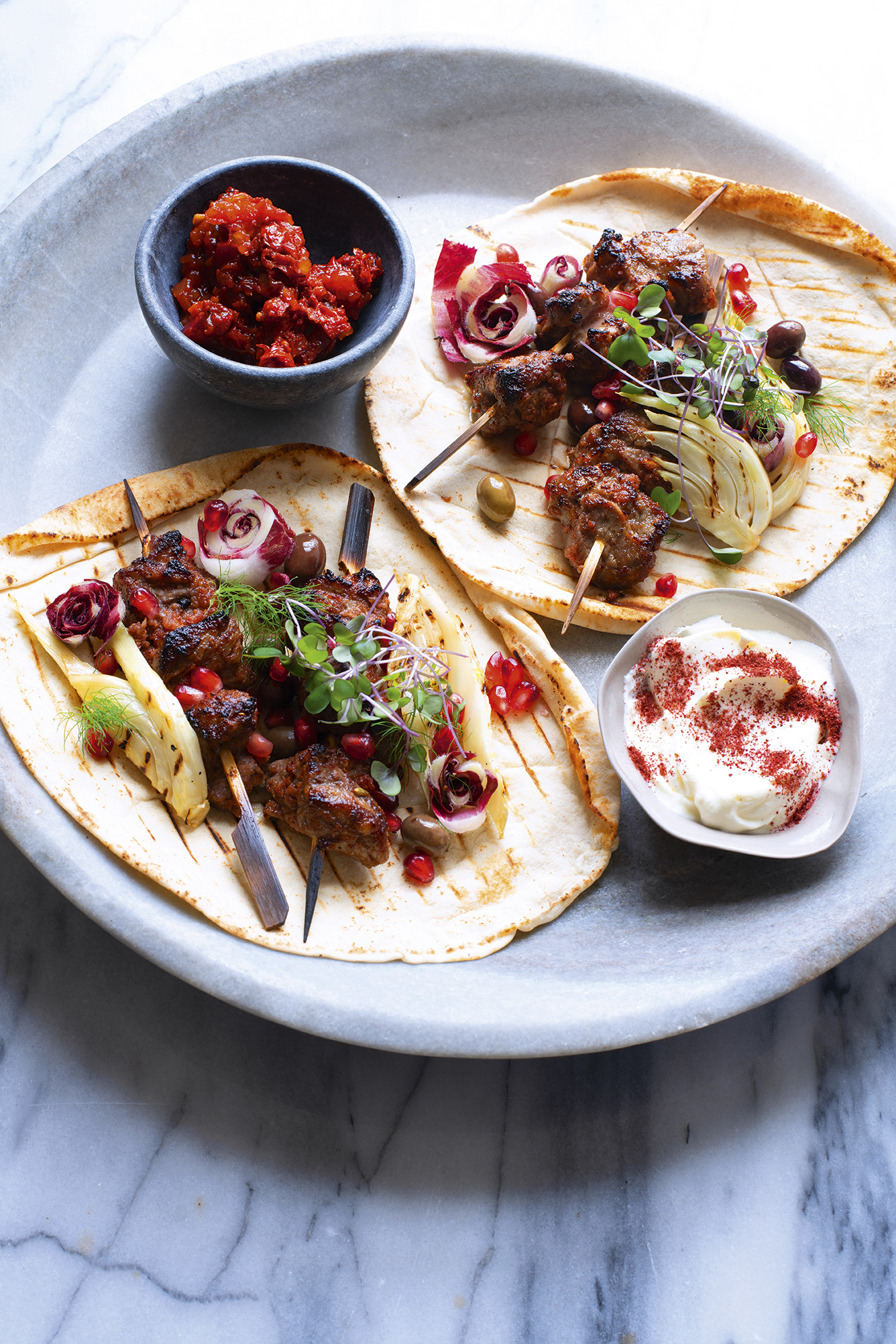Get Premium access to all the latest content online
Subscribe and view full print editions online... Subscribe
Serves 4 (Start 1 day before serving) Starters and mains
The day before, prepare the labneh. Season the yoghurt with the salt and tip into a muslin-lined sieve set over a bowl. Leave to drainin the fridge overnight. When ready to serve, put the drained labneh in a small serving bowl and scatter over the sumac.
At least 4 hours before, cut the neck fillet into 24 chunks and put in a large flat dish. Put the papaya in a small processor, blitz to a purée then transfer to a mixing bowl. Add the garlic, oil, cumin and sumac, if using. Mix well and pour over the lamb. Leave in the fridge to marinate for at least 4 hours or overnight if possible.
To make the smoky tomato salsa (you can also do this the day before if you like), preheat the oven to 220C/200C F/Gas 7. Remove the core from the tomatoes with a sharp-pointed knife, then cut in half and remove the seeds. Cut in half again and lay on a baking tray. Sprinkle with the sugar, pul biber, paprika and salt, then cook in the oven for 15 minutes.
Turn the oven down to 140C/ 120C F/Gas 1 and cook for another 1 hour 45 minutes (checking that they don’t get too dry). Remove and allow to cool, then, using a spoon, scrape the flesh from the skins and crush roughly with a fork. Transfer to a bowl, stir in the tomato chutney and chill until 30 minutes before serving.
Around 45 minutes before cooking the kebabs, soak 8 bamboo skewers in water and remove the lamb from the fridge. Tip the meat into a colander to allow the marinade to fall off, then wipe the excess off with kitchen paper and put the meat on a tray. Crunch the sea salt flakes (to break them up a little) over the meat and thread 3 cubes on to each skewer. Wrap the ends in foil to ensure they don’t burn and lay on a tray ready to grill.
To make the salad, trim and cut the fennel bulbs into thin wedges and toss with 1tbsp of the oil. Heat up a ridged griddle pan on a low-medium heat and, when hot, cook the fennel on each side for a couple of minutes, in batches, to get brown bar marks. Remove and put on kitchen paper while cooking the rest.
For the dressing, mix the mustard and wine vinegar in a screw-topped jar and add the remaining 4tbsp oil. Shake well to emulsify.
Put the fennel in a wide dish and coat with some of the dressing. Cut the chicory into rounds and add to the dish with the olives and pomegranate seeds. Spoon over more of the dressing (keep the rest in the fridge for another salad) and add the fennel fronds.
Preheat the grill to high or light the barbecue. Grill the kebabs for around 4 minutes on each side, turning if starting to over-char (the cubes should be just blackening on the edges). If using the barbecue, rake the coals to one side and cook the kebabs on the rack over indirect heat. Wrap the flatbreads in foil and heat briefly in the oven or over indirect heat on the barbecue.
Serve the kebabs and salad on the flatbreads, topped with the micro herbs, with the smoky salsa and labneh alongside.
Welsh Lamb comes with PGI (Protected Geographical
Indication) status, ensuring its quality, integrity and provenance.
Produced by caring farmers, traditional flocks are farmed
non-intensively across grasslands peppered with heather and fragrant
wild herbs just as they have been since the 14th century. The result is a
unique taste of Wales – versatile, succulent, sweet and tender.
This recipe was taken from the August/September 2021 issue of Food and Travel. To subscribe, click here.

Advertisement
Subscribe and view full print editions online... Subscribe